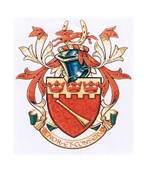Holcombe Hunt
History
The Holcombe Hunt can trace its lineage back to the 11th century. Its hounds are believed to be direct descendents of the Blue Gascoignes, who were brought across the Channel by the Normans.
Members are proud of their heritage, which includes the Royal Patronage of three kings, Edward 1, James 1 and George V. In 1617, when James 1 visited Hoghton Tower, he was welcomed and much charmed by Sir Gilbert de Houghton's extravagant gesture of laying velvet along the whole of the half-mile drive to the tower. The cost of this entertainment nearly ruined the De Houghton family, but the king was impressed and so enjoyed the hunt with Sir Gilbert that he granted a royal warrant to hunt over 12 townships, the privilege of wearing scarlet livery and knighted the loin of beef that evening 'Sir-Loin'.
Until the 1920s, although the Masters and followers had always been mounted, the hunt staff had to follow on foot. By then, three generations of the famous Jackson Family had hunted on foot with the Holcombe. They astounded strangers by jumping the fences like horses and landing on their hands and knees.
Prominent in the Holcombe Hunt were many of the titans of Lancashire textiles, including the anti-corn law triumvirate of Ashworth, Cobden and Bright. An Ashworth was often Master of Harriers and all three men were Quakers, thus enduring the criticism of the Society of Friends for hunting and shooting.
The booming Lancashire textile towns produced many rival harrier packs by the turn of the century, which led to the great point-to-point races. The first one hosted by the Holcombe was in April 1921 when 40,000 gathered at Affetside, near Bolton. Mills and shops closed down to let everyone gather for the races which popular newspapers of the day dubbed 'The Mill Workers Grand National'. Such was the respect that, during World War 2, a Warship was named after the Holcombe. In 1943, one year after the Hunt class Destroyer HMS Holcombe was launched, she was sunk by a U-Boat still carrying the six solid silver tankards inscribed with HH, presented to her by hunt members.
The hunt rode out right through the war years between 1939 and 1945 and when petrol rationing started to bite, the Hunt Secretary saw to it that the bus timetables for Bolton and surrounding areas were printed on the backs of meet cards to give foot followers the chance to support their beloved hunt.
Today, supporters love and practice the ancient of sports while hunting within the law.
